How to grow tomatoes: Ultimate seed & plug plant guide
 Lee Burkhill: Award Winning Designer & BBC 1's Garden Rescue Presenters Official Blog
Lee Burkhill: Award Winning Designer & BBC 1's Garden Rescue Presenters Official Blog

Growing your own fruit and vegetables is a fantastic way to engage with your garden, reduce your carbon footprint and help eat better organic produce. Tomatoes are one of our most popular fruits to buy in supermarkets and can be bought year-round (usually by being flown halfway around the world, sadly). Often, these 'forced tomatoes' taste rather lacklustre and have a dull orange colour instead of the vibrant red of fresh tomatoes.
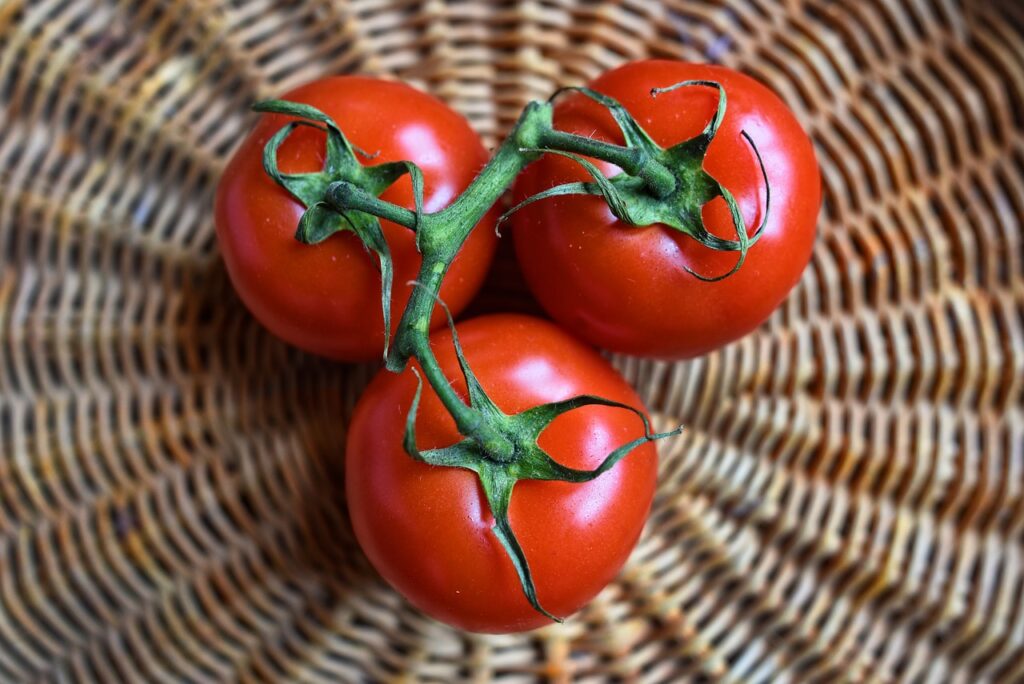
Did you know you can easily grow them at home at a fraction of the cost with a taste unparalleled to the wet, cold, anaemic-looking shop-bought varieties? This guide will show you how to grow tomatoes at home, whether in a greenhouse, windowsill or outdoors.
This page contains affiliate links for products I use and love. If you take action (i.e. subscribe, make a purchase) after clicking a link, I may earn some gardening commission which helps me keep the Garden Ninja Blog free for all.
Tomatoes are originally wild native plants from the Andes and also grow in parts of Bolivia, Chile, Colombia, Ecuador and Peru. They have been bred, transported and crossbred as varieties, hybrids and cultivars worldwide. Even though they've been bred outside their native countries, they still need hot, sunny conditions to grow properly. Forcing them in cold, shady or windswept gardens will just result in lacklustre results or tomato plants that die.
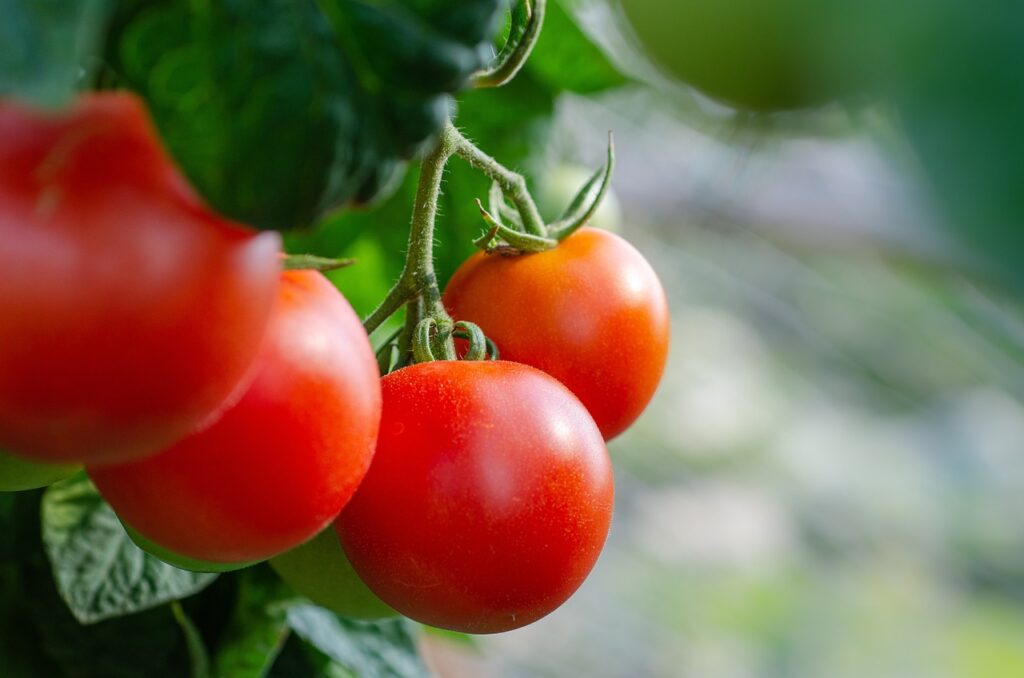
The best tomatoes are grown early in the year around March under glass or indoors, which gives the tomatoes time to grow strong, provide near-endless fruit and ripen properly. You can grow them from seed indoors as early as January or under glass. Then as soon as the warm weather comes, even transfer your tomatoes to the garden when the weather is milder, and frosts have passed.
The best time to sow tomato seeds is March.
Tomato seeds are a really cheap way to grow fruit in your garden, with a packet starting for a couple of pounds or dollars like these here.
It takes about five months from seed sowing to harvesting tomatoes. So, they are not a quick crop. If you think of the ultimate height of a tomato plant, you can see why. They put on loads of growth in the first part of the season and then send out side shoots known as trusses, which is where the flowers and fruits are born!
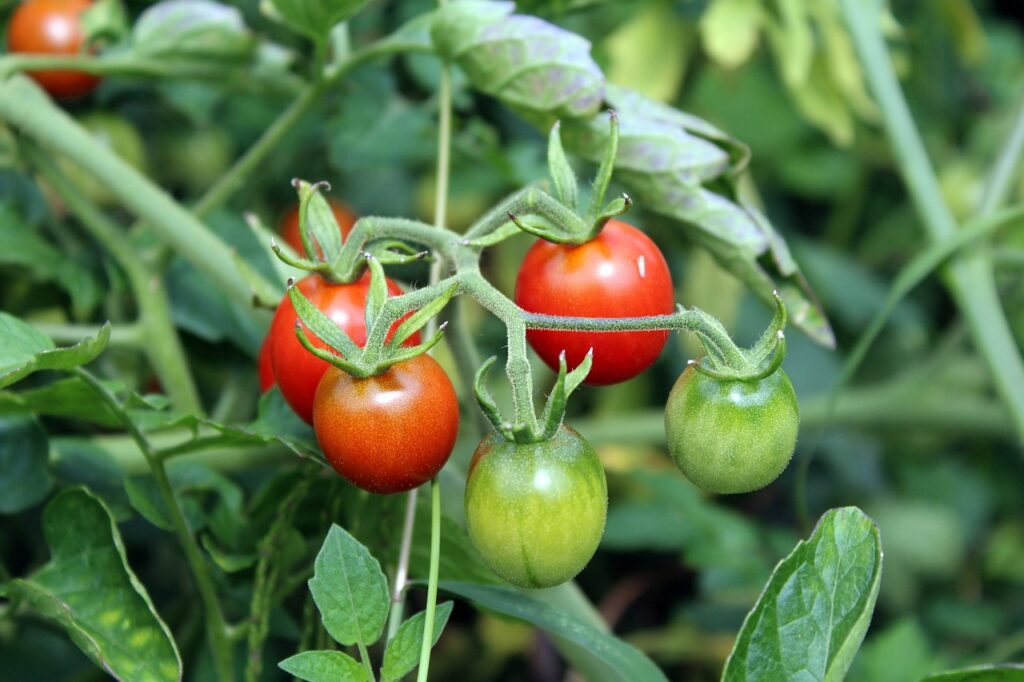
Growing tomatoes from plug plants or shop-bought container plants means you can get fruit in 3 months and in a good hot summer sometimes 2 months.
Did you know that you can take my course and learn how to become a Garden Ninja yourself? Click here for details
Whilst you can harvest your own seeds from existing tomatoes, it's best to buy your seed for consistency and choice. Buying tomato seeds allows you to pick a variety that suits your taste, growing space and requirements. You are ensuring they grow 'true to form' and for beginner gardeners, it's a much more predictable growing process!
Tomato seeds are relatively cheap to get hold of, and there are hundreds of varieties to choose from!
You will need the following to grow tomatoes from seed:
Sow tomato seeds from January to April in seed compost or fresh multipurpose compost. Don't try and cheat and grow them in soil; it's too dense, can be too rich for seedlings and gets very heavy when wet.
Sow your seeds about ¼ inch (6.5mm) deep. You can either use a seedling tray; wooden ones are best and fully recyclable. Alternatively, you can sow them individually into pots.
I find it's best to sow them into individual pots rather than seedling trays. This is because they like to have deep roots. By sowing individually in pots, you don't need to prick out and disturb them as much later on.
Tomatoes need a temperature above 18°C (around 25°C is best) to germinate. Tomatoes are sensitive to cold. So trying to grow them directly outside when it's cold or frosty is a road to nowhere.
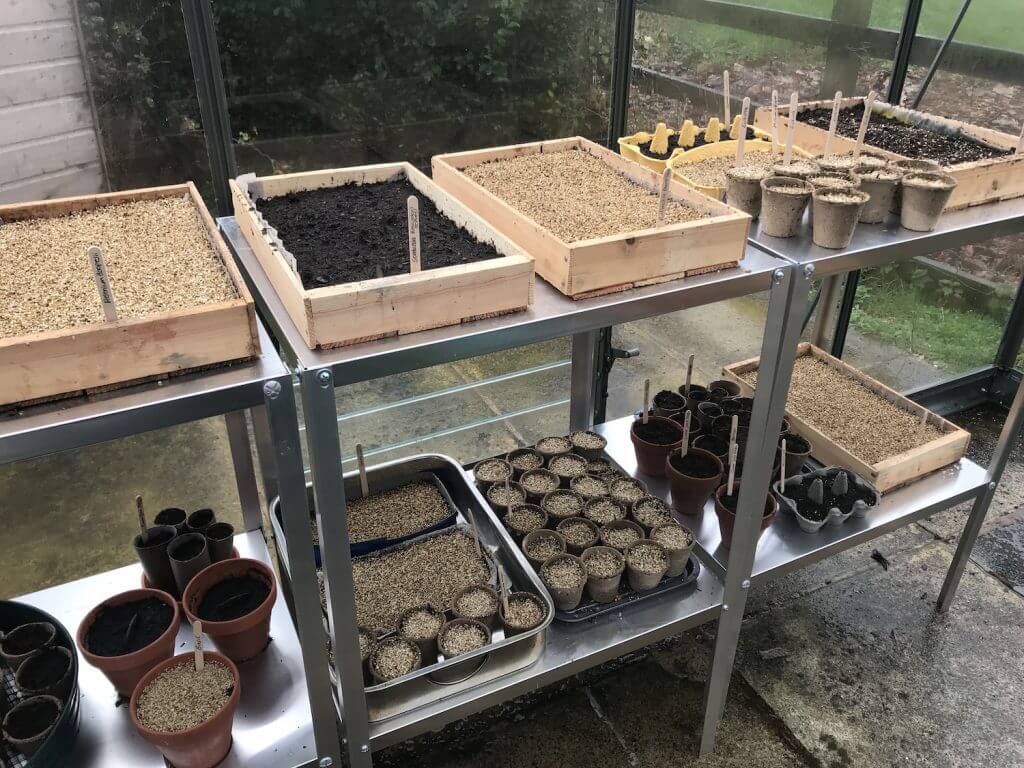
If you have a greenhouse this is the best place to sow tomatoes. The second best place is indoors on a sunny window sill. If not, grow them in a cold frame from early April onwards (the drawback to the last method is that you've got a far later harvest, and the fruits may not ripen).
Tomatoes take 7-14 days to germinate, so you do need some patience compared to faster-germinating plants like borage or lettuce.
Tomatoes are a hot climate plant and need heat to help them to grow. Keep the soil moist but be careful not to overwater, making the soil soggy and inhibiting growth.
Keep the temperature between 18-24 degrees. If you have a cold snap consider a greenhouse heater or keep a church candle lit in there with the door closed.
Once your tomato seedlings are large enough to handle, usually around 12cm or (5 inches) tall, you can then transfer them into individual containers or large pots. These will become their final planting place if growing under glass. It's now important to plant them in a super-rich compost mix. Dalefoot composts are the best for long-term feed, but any other peat-free compost will do.
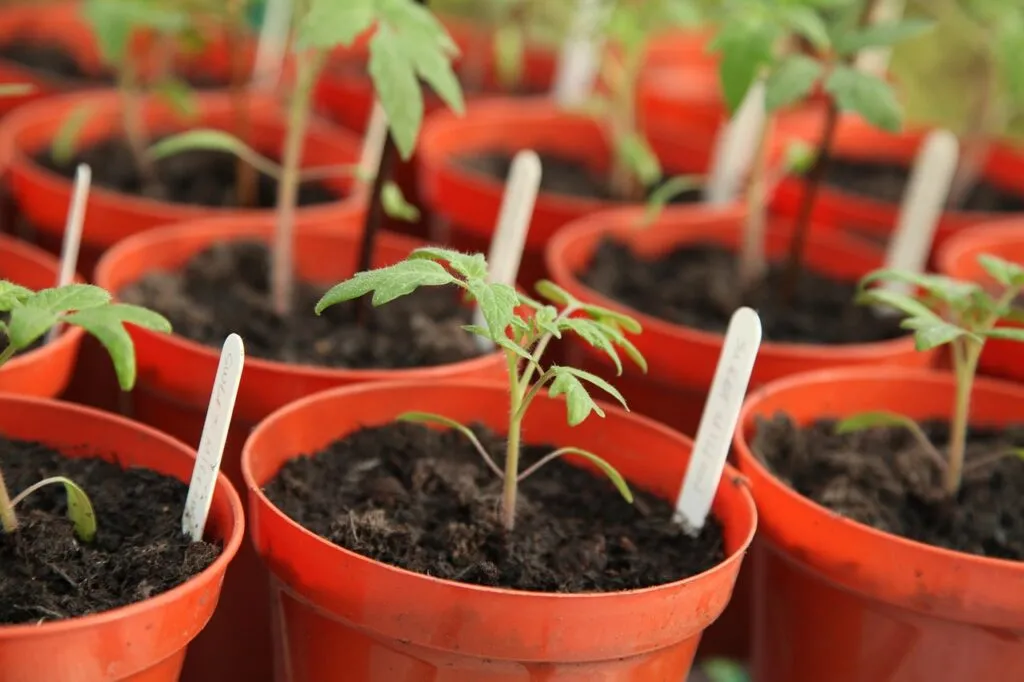
If planting them outside in a sheltered sunny seed bed then wait until the last frost has passed. If night temperatures drop below freezing, keep them inside for now as any frost will kill them. When planting outdoors ensure it's in full sun or south facing area of the garden.
Keep your tomato plants adequately watered during the growing season. Stressing them with drought will cause their stems to collapse or the fruits to split and crack. It's best to make sure you water them a little and often rather than flood them when dry. This flooding causes the fruits to sometimes burst or split.
Tomato plants are really hungry once fruiting. Even when planted in high-quality peat-free compost, they will still need additional feeding. Choose a high potassium feed, made for fruits such as liquid tomato feed or better yet home made comfrey tea. You can find out how to make this below.
Once your tomato plants are growing vigorously, it's important to pinch out the top of your tomato to control their growth.
For greenhouse grown tomatoes, let them grow to a height of 6 trusses.
For outdoor tomato varieties pinch them out at a height of 4 trusses as they won't get enough heat here in the UK to reach their full potential so conserve the energy for fruit instead.
It's also important to nip out the side shoots from the trusses. These are the shoots that grow in between the main stem and the truss (big shoots growing horizontally off the main stem). See the image below to know which bits to pinch out. Use your fingers and simply snap off the growth in between the truss and the stem.
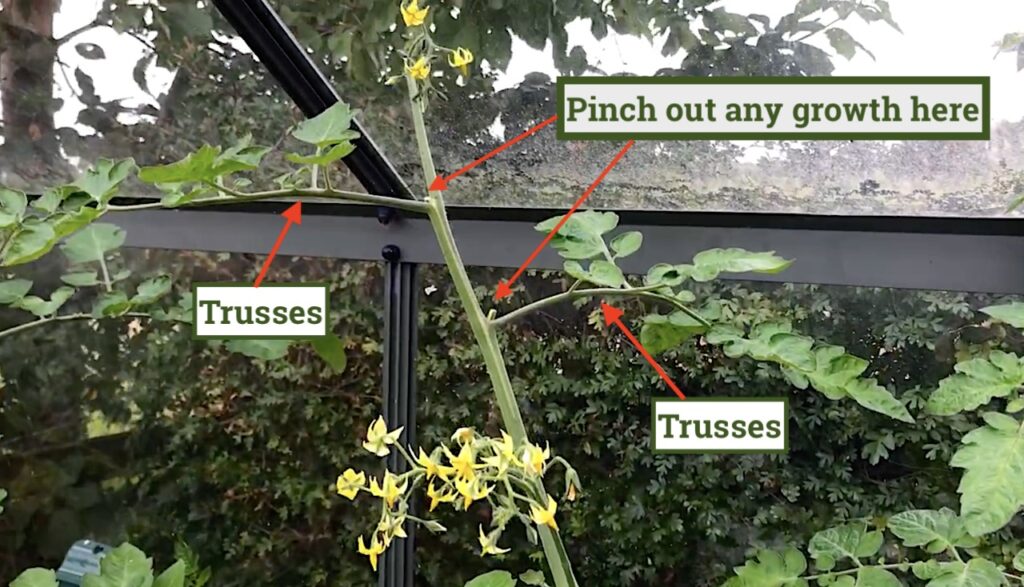
We pinch these out as tomatoes are bushy growing plants. If we don't nip these out they get overcrowded, and hard to harvest and the weight of the fruits can sometimes cause these side shoots or trusses to snap with the weight. This practice of pinching out tomatoes just controls the growth giving bigger fruit that are easier to harvest and look after.
Around August time in the UK it's time to harvest your fruits! This is the best bit of growing tomatoes. Once they are red and plump looking, they should easily pull away from the vine. For clusters of tomatoes, you can simply cut the vine with some clean, sharp secateurs.
Congratulations, you've grown your own tomatoes!
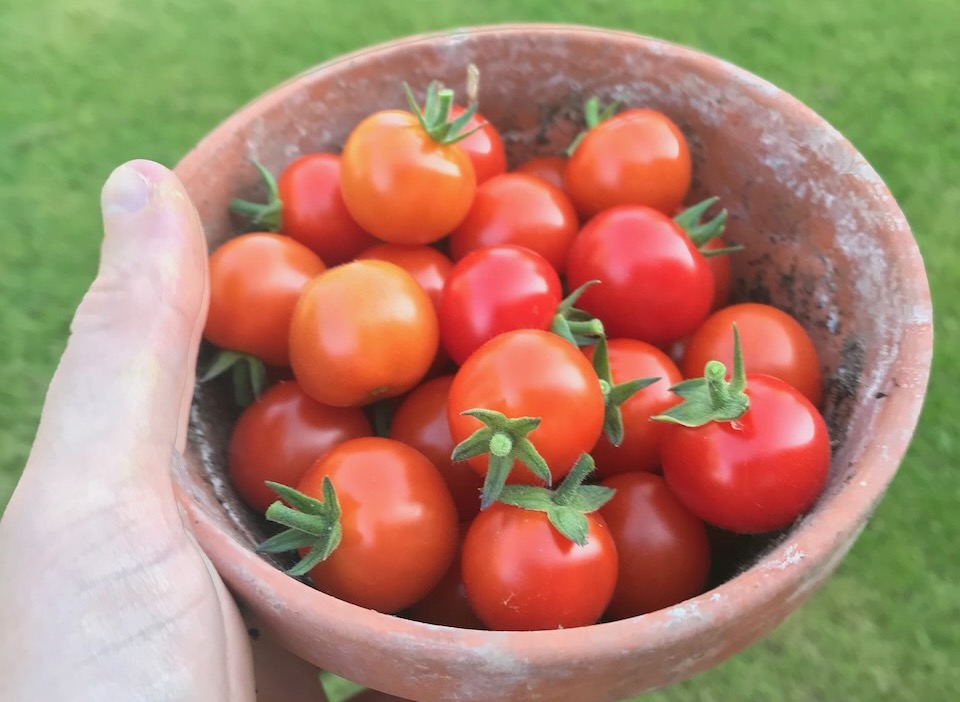
As for green tomatoes, you should leave these on the vine to see if they ripen in a few weeks. If you're at the end of the growing season, i.e. September, you can still harvest these, but it's best to cook with them or preserve them vs eating them raw. They will be hard and quite tart, but they do make excellent pickles or are lovely fried in butter!
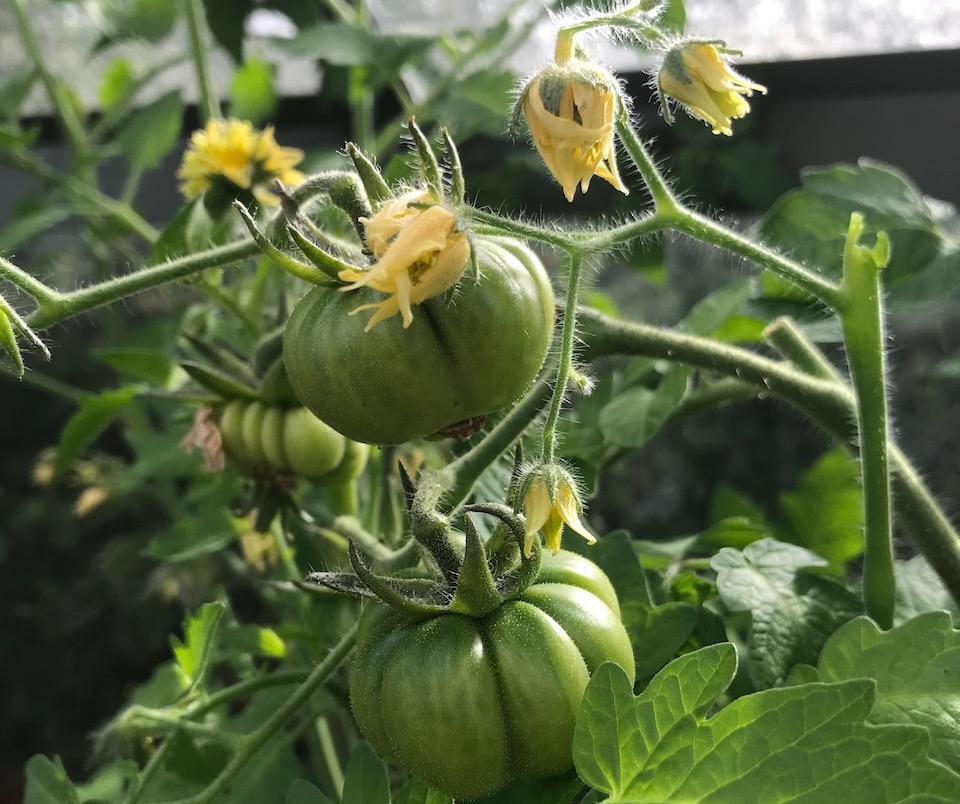
Plug plants are ready-grown mini tomatoes that you can pot pon immediately to their final planting position. By using plug plants you skip out the seed-sowing stage. You can buy tomato plug plants here.
The process is exactly the same as for growing tomatoes from seeds. Only you get to start at the 'potting on' stage, which is step 5 above. If you're going to be planting tomatoes directly outside in either raised beds or vegetable patches, you need to make sure you only plant them out after the last of the frosts. Plant out plug plant tomatoes in May in the UK.
Ensure you space your tomatoes with enough room to put on all their growth in the summer. A good rule for spacing tomatoes is to give them 50cm (20 inches) apart in rows with canes for support.
They will need a good quality peat-free compost mulch and feed throughout the year. Outdoor-grown tomatoes should have their tops pinched out when they reach 4 trusses high. This is to focus energy on fruiting as they won't get as warm as if grown in a greenhouse.
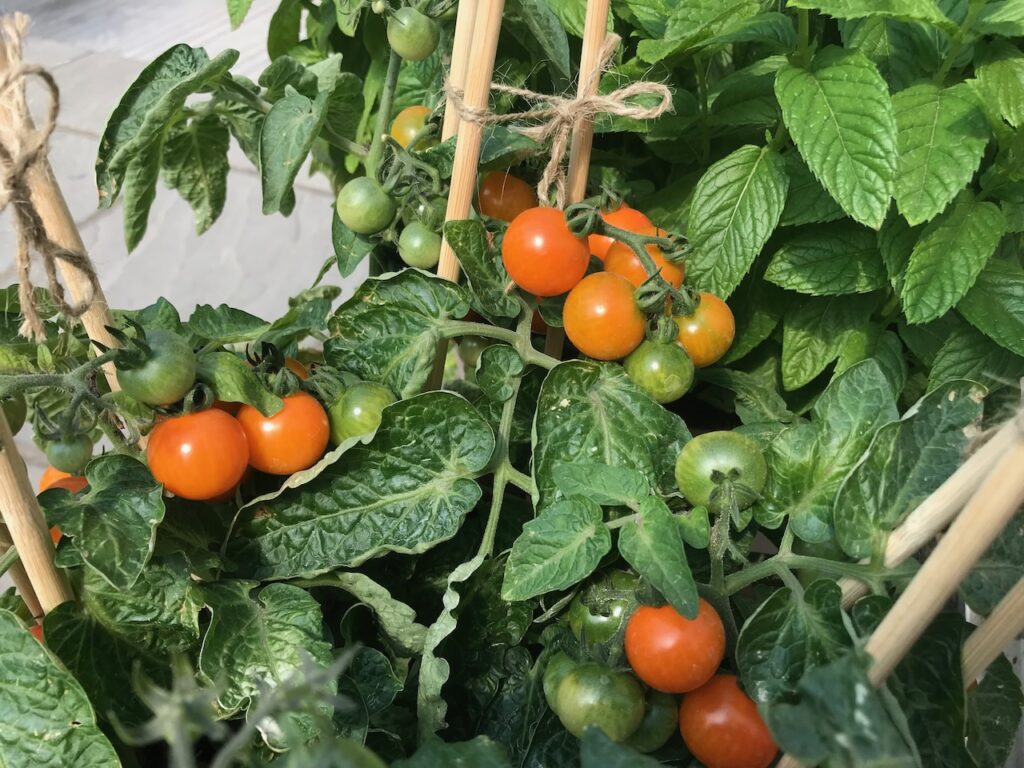
In my experience, growing tomatoes in a greenhouse are far easier for beginners, and you get much more fruit!
Grow bags like this one are a great way to ensure your tomato plants have enough feed during the growing season. They can make it really easy for beginners to get their tomatoes off to a good start. Most grow bags are long, thin bags of compost that two or three tomato plants can be put into when the grow bag is laid flat.
Grow bags are a cheap way of ensuring your tomatoes have fresh compost each growing season.
Often grow bags have holes marked for cutting, making it easy to plop in your tomatoes. They are long and heavy, so they tend to help weigh down taller tomatoes easily. Stopping the tomatoes in the greenhouse from bending over, but they still need staking.
However, there are some drawbacks to using grow bags over containers for tomatoes:
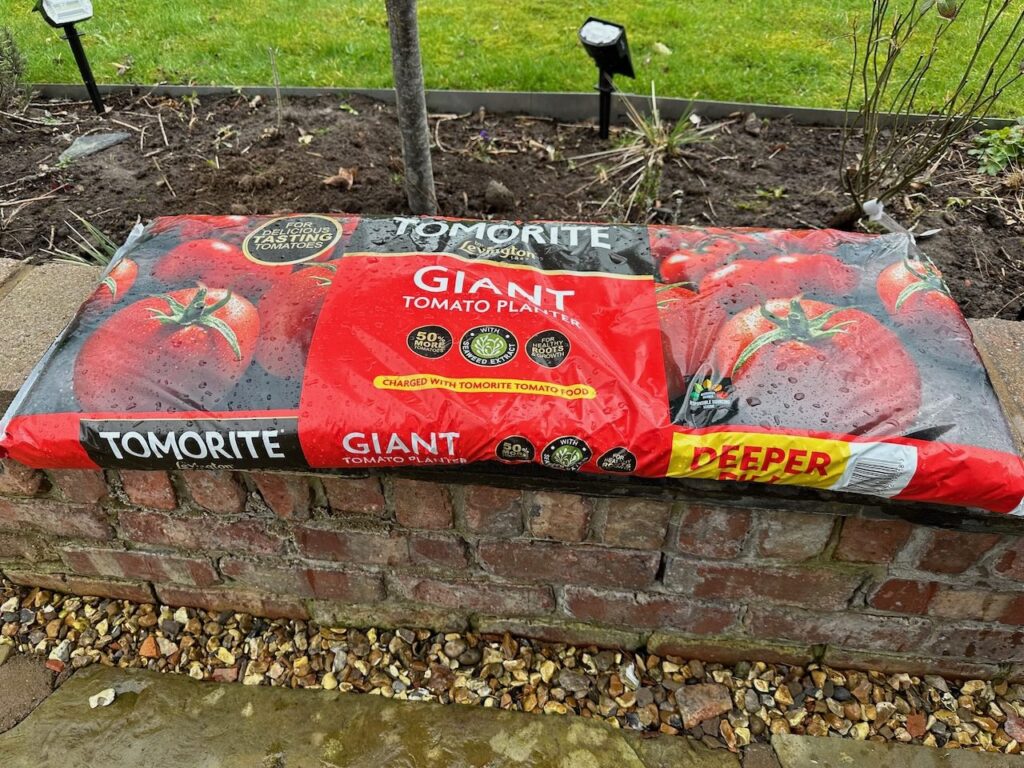
There's plenty of advice about not reusing compost for growing your own fruit and vegetables, with all sorts of antiquated reasons. Much of this comes from old advice about controlling pests, which we now know much more about. With the introduction of organic gardening and companion planting, pests shouldn't be too much of an issue. In the olden days, the soil would be double dug each year, compost binned after one use, and nasty chemicals would be sprayed everywhere to sterile our greenhouses, etc. All of which is bad for the environment and overkill.
The quick answer is: yes, you can reuse tomatoes compost at the end of the season. In fact, I've got a handy video guide on what to do with your old compost below.
Much of the old advice was around overwintering pests or diseases, but with our better understanding of plant hygiene, most of this is unfounded. Unless your tomatoes have had blight or a disease during the season, the compost will be fine. If you've had tomato blight always dispose of the compost as you can spread it if not.
When reusing old compost for fruit and vegetables, it's worth checking how hungry the new plants are for nutrients. Tomatoes and potatoes are very hungry, so they will need additional nutrients or feed if you're reusing compost. If you don't top this compost up, you may end up with lower yields.
The bottom line when it comes to tomato compost is to reuse it as much as possible, either by using it as a mulch elsewhere in the garden, top-dressing your lawn or adding an organic feed to it to be able to reuse it for other crops like lettuce.
Tomatoes are a hot climate full sun plants, so we must mimic those conditions to get the best out of them. They will need, on average 8 hours of sunlight in the growing season, especially if you want the fruits to ripen to a rich red colour.
In terms of temperature, they need a minimum of 21 - 24C (70 - 75F). Temperatures less than this will stunt their growth, and temperatures above this can cause the fruits to split or plants to bolt (grow excessively tall, causing them to fall over).
To grow tomatoes successfully from seeds, you’ll need some starter trays and 3-4 inch pots to transfer them into after they begin to grow. You’ll also need rich, fertile soil or peat-free potting compost and a good spot with plenty of sun (around eight hours a day) and shelter.
When it comes to growing tomatoes, there's often confusion over the differences between a truss and a side shoot. Side shoots need to be removed because they will weaken the plant's structure, fruiting potential and make for an overly bushy plant.
Tomato trusses are where flowers and fruit are created. They grow off horizontally from the main stem. They will flower, and if the flowers are pollinated by insects (or a gardener with a paintbrush), then they turn into fruit.
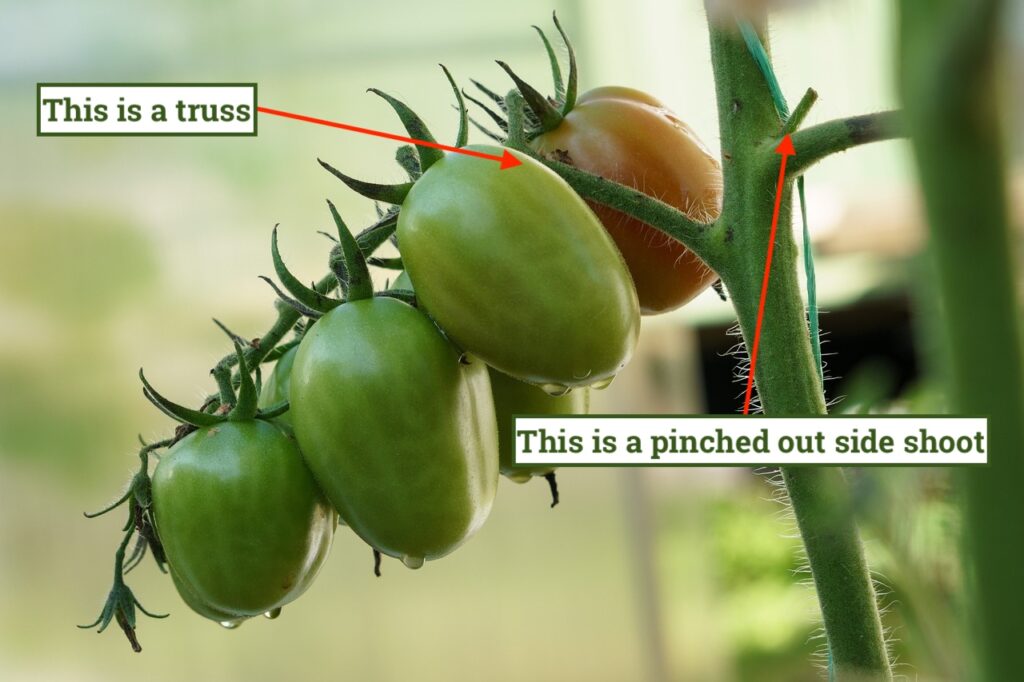
A side shoot grows between a truss and the main stem at a 45-degree angle. These, too, can flower and fruit but not as efficiently as a truss, as they usually don't grow as long. Side shoots but take away precious energy from trusses. Trusses are the most effective way of growing fruit in horizontal layers that can be easily picked and supported by canes.
Yes, you can, but it's not always advisable. This is because most commercially grown tomatoes are hybrids from cross-breeding two parent plants with desirable characteristics. However, these traits tend to only hold true in year 1; after that, the results can be erratic, and the characteristics may revert.
The only way to ensure like for like is heirloom tomato varieties that haven't been crossbred. However, you must keep them separate from other tomatoes when they get pollinated so they don't become their own hybrids. A bit of a faff if you ask me!
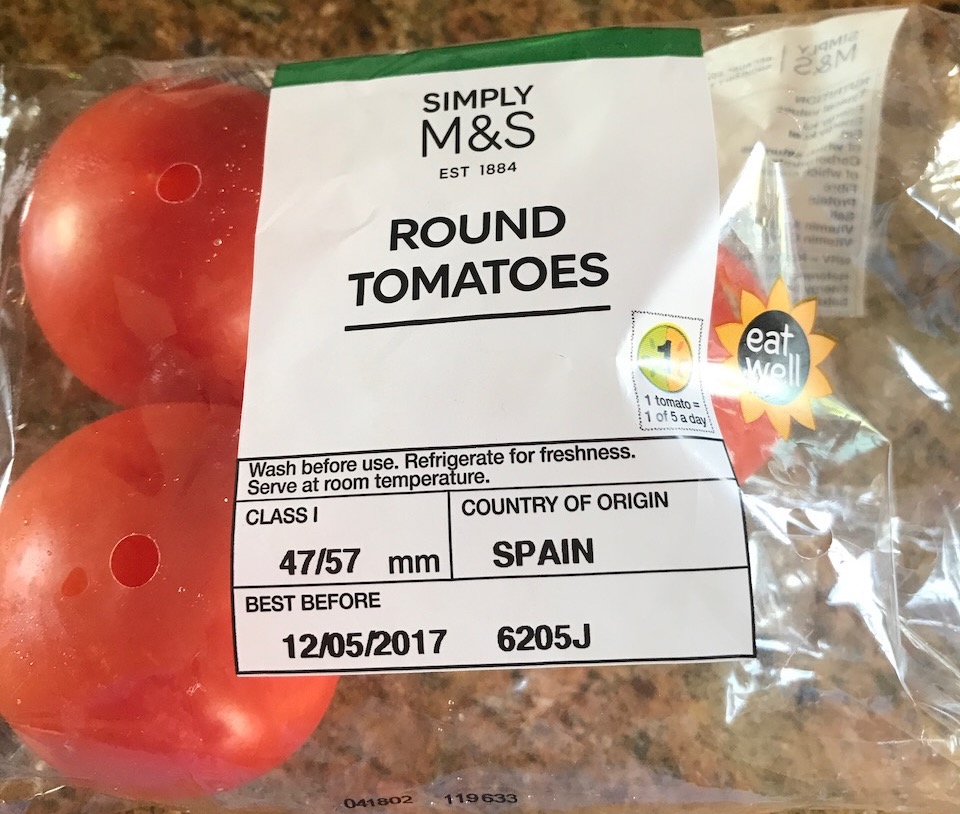
So even if you save, dry out and then sow the seed from supermarket tomatoes, they probably won't grow as expected. Save yourself the heartache and grab some seeds instead is my experience!
Harvest tomatoes in late summer, usually from August onwards. You can tell when a tomato is ripe as it will be a vibrant red colour (unless you're growing purple or other coloured varieties). They will be firm but not hard, and they will easily twist off from the tomato truss.
Harvesting just before they become fully ripe is a good idea as they last longer when taken inside. If you leave them too late, they can spoil quickly inside.
If you're planting tomatoes outside in a raised bed, there are a few plants you shouldn't plant next to them. The reasons for this are usually that they compete for resources, will inhibit the tomato's growth or encourage pests that will prey on your plants.
If you want to help reduce pests such as white fly, cabbage white caterpillars or slugs nibbling your tomatoes, then using companion plants is a great way to do this without resorting to chemical pesticides. We should always try and be as light touch as possible as ethical, environmentally conscious gardeners. I never use chemicals in my garden. They are too damaging to wildlife and can end up accidentally in our food sources.
Companion plants either help put off pests with their scent or entice beneficial predators to the area to nibble pests before they get to your tomatoes.
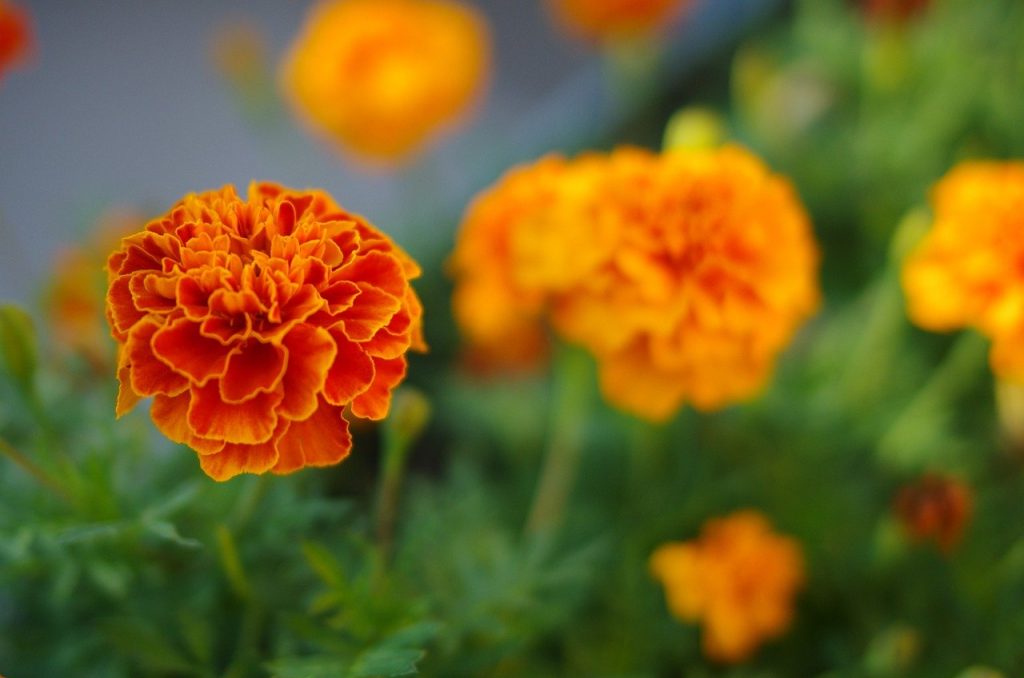
Below are a few of my tried and tested tomato plants to grow from seed or by plug plant. There's a mix of regular tomatoes, cherry and beef (beefsteak) tomatoes, depending on what type you want to grow.
Growing your own tomatoes can be a really rewarding way to start your grow-your-own-produce journey. The smell of fresh tomatoes in a greenhouse signifies summer to all gardeners. Given that tomatoes are pretty foolproof to grow and have so many culinary uses, they're an excellent first edible to grow in your gardens.
By following this easy guide, you'll be the envy of your neighbours in growing an array of different tomatoes, whether cherry, beefsteak or regular salad tomatoes. With their unrivalled taste and organic properties, you'll never return to supermarket tomatoes again!
Happy growing!



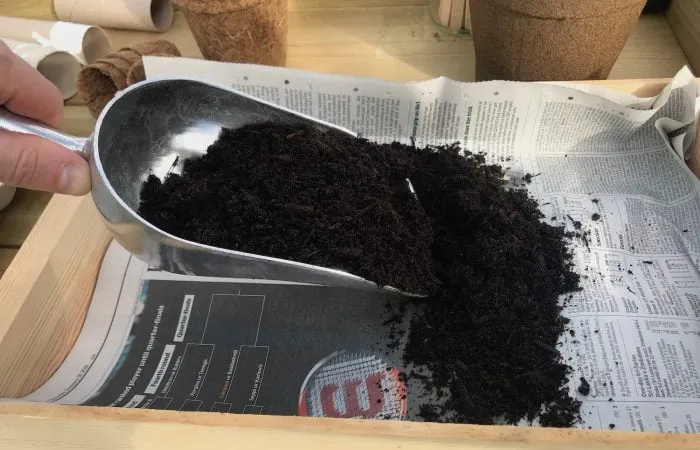
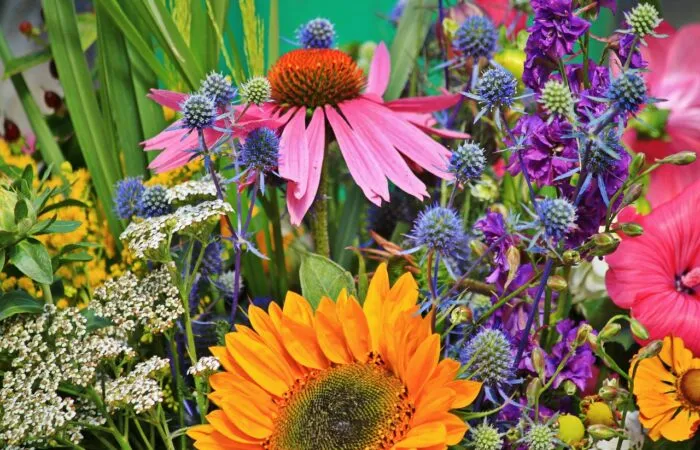
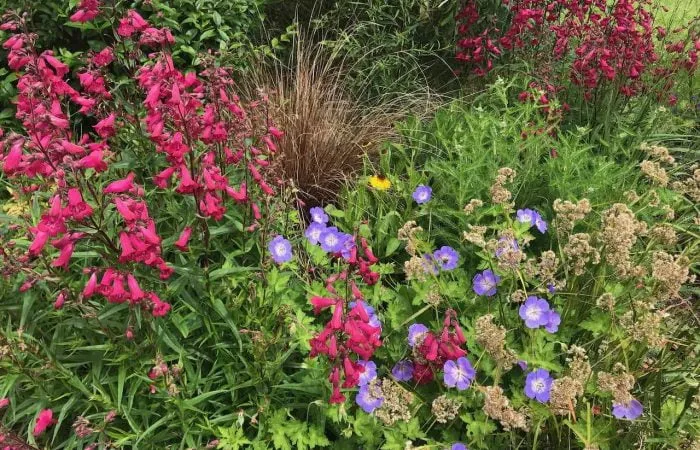
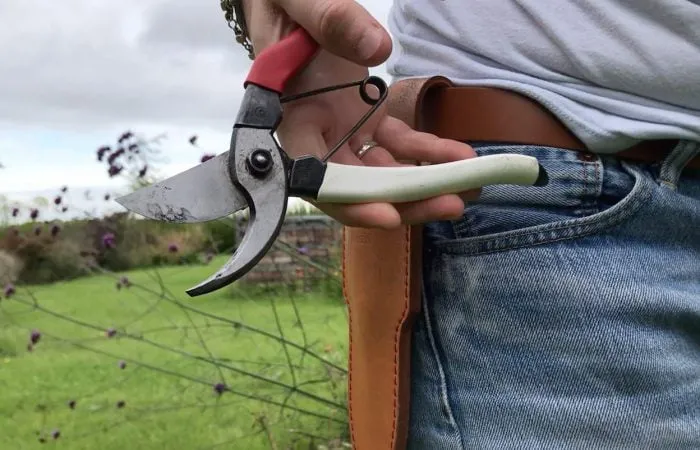



JOIN THE NINJAS
Join our Ninja community for extra guides & Discount Codes for Online Garden Courses!